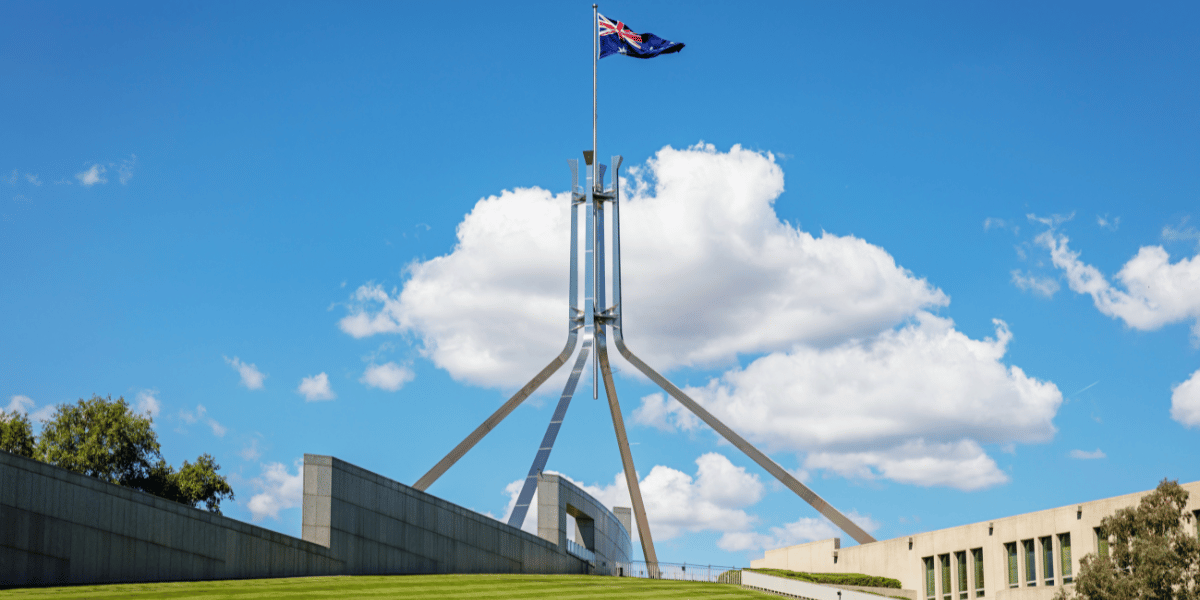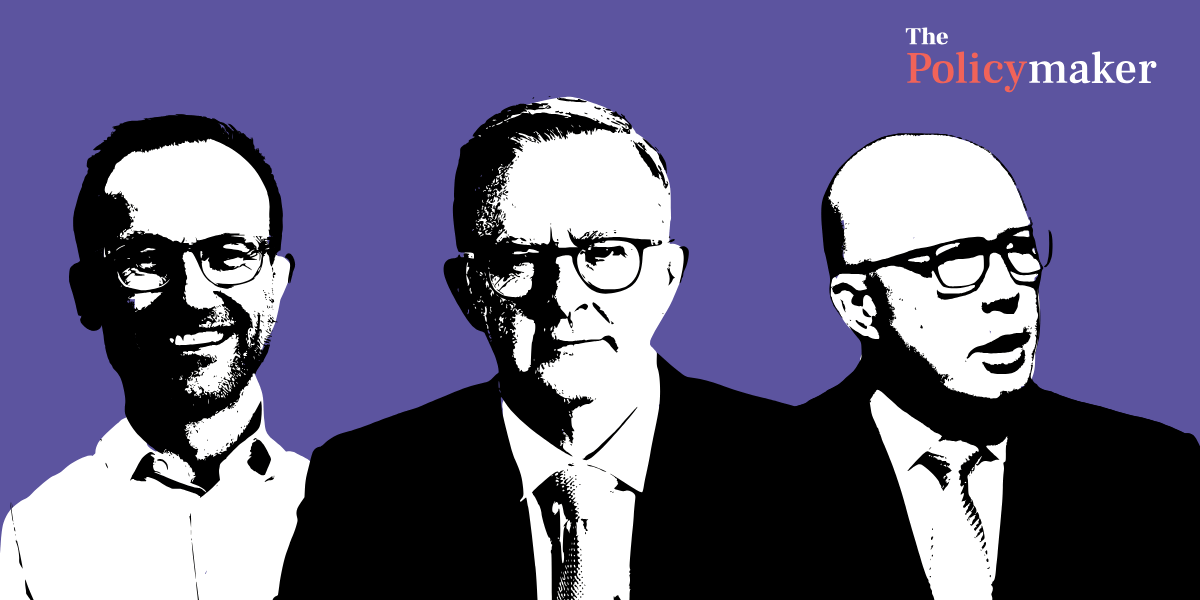25 July 2024
This article is released ahead of the JMI Policymaker Summit 2024 to offer key insights into the conference’s central theme of intergenerational equity. Learn more and register here.
Industry policy is back. In recent years, many governments around the world have been engaging in industry policy – attempts to steer economic growth by supporting key industries – in new and different ways.
The United States’ Inflation Reduction Act seeks to spur investment in industries that address climate change and provide clean energy, including more than 20 different new and enhanced tax incentives. China’s Made in China 2025 policy has sought to transform the country from the world’s factory towards success in ten high innovation industries such as AI and electric vehicles. Closer to home, the Future Made in Australia policy seeks to encourage investment into industries supporting the net zero transformation and economic security and resilience.
A significant body of literature and commentary has developed over decades as to why industry policy does not work. But comparatively little research has developed to explain how it does work – though more is emerging particularly around the green transition. Robust frameworks to govern industry policy and evidence-based insights on how it is best implemented will be critical to help governments apply these ideas in practice and at speed in coming years.
As part of my research into leveraging investment into industry and innovation as Senior Policy Fellow at the James Martin Institute for Public Policy (JMI), I examined this emerging literature – particularly from the US, UK and Australia. Here are my five top insights about “new” (or “modern”) industry policy to help inform today’s policymakers:
1. All countries have industry policies – and always have. Professor Joseph Stiglitz at Columbia University remarked: “Every country has an industry policy. The question is whether it is explicit, whether it is implicit, whether it is coherent, whether it is incoherent.” Veteran economics journalist Ross Gittins helps interpret this too, recognising that governments have always intervened in the economy, but the question is whether it is justified by market failure. Government decisions are made in many ways and can have significant implications for how industries operate, thrive and decline.
2. Effective industry policy brings government together. New industry policy does not fit neatly into traditional government organising methods or departmental structures – a “department of industry” will not be the only actor when many important factors sit outside this portfolio, such as workforce development, research and business regulation.
In seminal Australian work drawing insights from the OECD, the Centre for Policy Development reflects that effective industry policy requires three key elements: (1) setting a specific direction, (2) deploying a range of policy tools and (3) governance. The whole apparatus of government should be used to encourage industry development in priority areas. CPD identifies over 30 unique industrial priorities in Australia spread across several umbrella initiatives, sectors, types of market interventions, and all levels of government.
3. Missions can help drive industry policy (and can go well beyond the moon!). “Missions” have captured increasing interest, particularly after Professor Marianna Mazzucato’s recent visit to Australia. Missions are defined as concrete goals that help tackle a “grand challenge” such as addressing inequality or climate change. They can help turn complex challenges into investment pathways and spur the growth of industries.
Missions can be big, for instance precipitating big economic transformations: think putting the UK at the forefront of future mobility systems. Missions can be focused – they often encourage collaboration in science, research and innovation systems, just as the CSIRO is already deploying its science-led missions in areas including drought resilience and reducing plastic waste. Missions can also be broader than just industry policy. The new UK Labour government has publicly committed to a mission-driven government agenda with five missions, including fixing the healthcare system, ensuring safer streets and kickstarting growth.
4. New roles are needed for both government and industry. Government has often been characterised as detached from the day-to-day of industry, usually due to legitimate probity considerations, but also because of a cultural attitude to let industry “get on with it”.
New industry policy requires government to rethink how it works and engages with the private sector. This could mean a more dynamic relationship focused on public value. Government needs to shift its approach to do more “learning-by-doing” and be more open to risk-taking across a portfolio of interventions. Governments can be more up-front with how they put conditions on their support to industry to help support their policy goals and ensure governments see a fair share of returns as well as the risks. Governments need to rebuild their capacity to help shape the markets that industries operate in, including expertise in industry trends, mastery of policy tools and an ability to negotiate effectively with business. However, industry also needs to better understand how to work with government to maximise public and financial value.
5. New industry policy may be able to shape modern jobs. Much of the focus on industry policy has been about driving economic transitions to achieve net zero or address geopolitical competition. This will have implications for manufacturing, clean energy and high-tech industries. The emerging frontier of industry policy literature is starting to look beyond this to consider what the economy looks like for workers in these industries and beyond.
Manufacturing industries have faced a structural decline in employment across developed economies due to outsourcing and technological advancements. The significant government support in industry policies may not lead to the jobs promised if industries become more capital intensive. Government may be able to direct its support to encourage technology development that augments workers, not replaces them. “ARPA-W”, proposed by Professor Dani Rodrik, provides an interesting model to stimulate this type of development.
Further, the services sectors now comprise most jobs in developed economies. In Australia this sits at around 80 per cent. Any government focused on enhancing productivity and creating “good jobs” will need to consider if and how to apply industry policies to services industries, such as retail, hospitality, healthcare, education and long-term care. There is little evidence of a sectoral focus being taken so far, though Productivity Commissioner Danielle Wood’s recent comments highlight that new ways are needed to find appropriate productivity improvements in the care economy. However, there are strong reasons to believe that public-private initiatives that promote investments in new work practices, job-specific training, regulations and culture could yield productivity improvements and good jobs.
The industry policy debate is moving from if to how. Evidence is growing that what works is an integrated policy that chases clear goals and builds internal government capacity to achieve them. This might feel different to the recent past – however it provides an exciting opportunity for policymakers to not just reshape markets and industries, but also how they conceptualise their roles in making a real difference to people’s lives.
Simon Rowell developed this article in his capacity as a Senior Policy Fellow (Public Service Stream) at JMI on leave from The Cabinet Office in the NSW Government. Simon is an experienced senior executive committed to driving public impact through economic growth and investment across the public, private and non-profit sectors.
Image credit: da-kuk from Getty Images Signature
Features
Libby Hackett, Jordan Ward, Jack Isherwood, Bonnie Bley, Hannah Lobb, Isabella Whealing and Hugh Piper
Subscribe to The Policymaker
Explore more articles
Libby Hackett, Jordan Ward, Jack Isherwood, Bonnie Bley, Hannah Lobb, Isabella Whealing and Hugh Piper
Features
Libby Hackett, Jordan Ward, Jack Isherwood, Bonnie Bley, Hannah Lobb, Isabella Whealing and Hugh Piper
Explore more articles
Libby Hackett, Jordan Ward, Jack Isherwood, Bonnie Bley, Hannah Lobb, Isabella Whealing and Hugh Piper
Subscribe to The Policymaker








